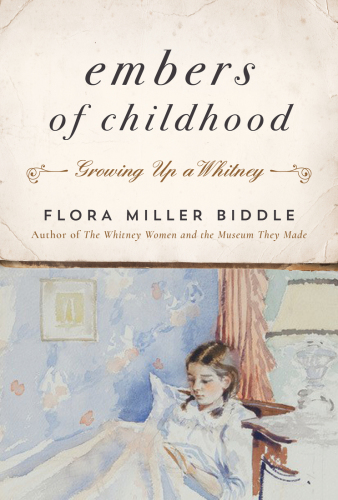
Embers of Childhood
Growing Up a Whitney
کتاب های مرتبط
- اطلاعات
- نقد و بررسی
- دیدگاه کاربران
نقد و بررسی

April 1, 2019
Biddle (The Whitney Women and the Museum They Made), president of the Whitney Museum of American Art from 1977 to 1995, examines her privileged childhood in this tender Americanized version of Downton Abbey, filled with estates, servants, distant parents, and all the trappings of aristocracy. The granddaughter of Whitney Museum founder Gertrude Vanderbilt Whitney, Biddle was born into affluence in 1928 and slowly recognized the great disparities of wealth and lifestyle between her legendary family and their staff, which she now calls “materialism as transgression.” Biddle details her family’s storied history before sharing tales of traveling on a private rail car between the family’s mansion on Long Island and their home in Aiken, S.C., enjoying a carefree existence hunting dove, riding horses, and participating in late summer fly-fishing at the family’s private paradise in the Adirondack Mountains. All this was under the watchful, strict eyes of dedicated governesses, stewards, and guides who lived simply and subsisted on the patronage of her affluent family, about which she came to feel “embarrassed and ashamed.” Returning in her 70s to her old estate in Aiken—which had been sold and remodeled—Biddle was “glad to discover that we both have a capacity for transformation and for growth.” This understated but thoughtful tale provides a fascinating look at America’s old monied class.

April 15, 2019
A memoir from the granddaughter of the founder of the Whitney Museum of American Art. Biddle (The Whitney Women and the Museum They Made: A Family Memoir, 2017), who served as the president of the Whitney from 1977 to 1995, writes about how her grandmother Gertrude Vanderbilt Whitney (1875-1942) founded the Whitney and how her descendants, including the author, continue to serve on its board. As Biddle shows, in families of wealth, it was accepted that children were turned over to nannies, governesses, and servants while parents were often absent in body and mind. The formality her parents exhibited toward her and her siblings left her seeking more meaningful human contact, which she found in a kind nursery attendant, a teacher, and her riding instructor, among others. She never smiled in childhood photos, was frightened to disobey, and was under constant supervision. Though she had security and comfort, the author was taught to mask feelings of sadness, boredom, and the constant loneliness she mentions throughout the book. "School" was just a few children on the grounds of Joye Cottage in Aiken, South Carolina, where most of her childhood was spent. "It was my first nest," she writes, "and the one that means the most to me in a long life; a touchstone, origin and symbol of that part of me that is deep inside." Biddle writes fondly of days spent fishing and hunting, activities that she was occasionally able to enjoy with her parents. When summering in France, the family spoke only French, receiving a fine if they spoke English. Dotted throughout the narrative are intriguing tidbits about life among the ultrawealthy--e.g., the artist who painted her portrait in 1938 "would later be painting President Roosevelt at the time he died." Refreshingly, the author rarely complains or brags, creating an honest portrait of a privileged upbringing.
COPYRIGHT(2019) Kirkus Reviews, ALL RIGHTS RESERVED.

June 1, 2019
Biddle (The Whitney Women and the Museum They Made) recounts her life as a member of the prestigious Whitney family (she is a granddaughter of Whitney museum founder Gertrude Vanderbilt Whitney) in the early 20th century. The author begins with details of her childhood in Aiken, SC, where a small band of blue bloods lived most of the year, holding fox hunts and social gatherings. Biddle further discusses other Whitney properties and members of the close-knit aristocratic community: her brother and vivacious half siblings as well as the nurses and teachers who shaped her life. Sprinkled throughout this work that reads a bit like a scrapbook are photos of fishing and hunting cabins and family events. The tone is mixed; both light reading with a nostalgic air that merges warm memories of an idyllic upbringing and the loneliness in a child whose parents were often away or emotionally distant. VERDICT Though well written, this honest memoir of a privileged life will likely most appeal to those interested in the Whitneys. The specificity of its subject matter reaching a somewhat limited audience.--Stacy Shaw, Denver
Copyright 2019 Library Journal, LLC Used with permission.

























دیدگاه کاربران